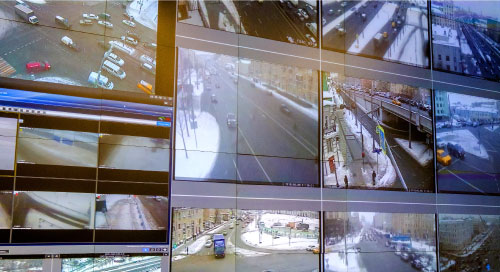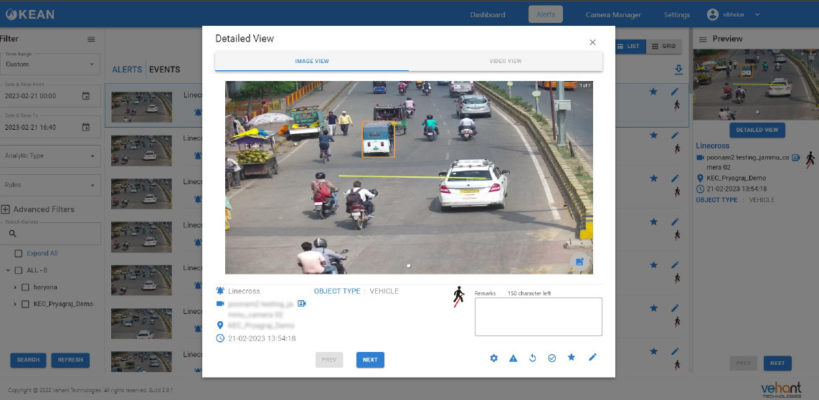Fill form to unlock content
Error - something went wrong!
Get the latest on IoT and network edge for retail.
You are following this topic.
AI Video Analytics Improves Operational Efficiencies

City governments and private enterprises might not realize it, but they could be sitting on a treasure trove: large volumes of video imagery from closed circuit television (CCTV) cameras. But this amount of data takes intelligence to understand what is happening in the video, according to Saurabh Pachnanda, Product Manager at Vehant Technologies, a company specializing in security-based products.
For example, you can find cameras all over public spaces such as parking lots, apartment building entrances, retail shops, hospitals, and smart cities. And as a result, government and private enterprises are drowning in a glut of raw video footage and data that is useless unless they can derive valuable insights from it.
The Growth of Video Analytics
Case in point, a camera might merely spot dozens of cars turning around on the highway, but it takes intelligence to understand what could potentially indicate an obstruction, Pachnanda explains. Sure, human operators can sift through footage, but finding a few seconds’ worth of useful information in hours’ and hours’ worth of video footage is like looking for a needle in a haystack. It’s grossly inefficient and expensive to deploy human labor to the task.
Luckily, advances in machine learning computer vision algorithms deliver a more sharply honed ability to derive intelligence from imagery (Figure 1). Pachnanda has noticed that these, combined with increased computing power at the edge, accelerate demand for actionable video analytics. “There’s an increased need to secure some of these technologies and bring productivity even higher,” he says. “Computer vision machine learning algorithms help deliver intelligence so users can understand what’s happening. Instead of having someone focus on the raw video data all the time, we can get their attention on specific events or specific insights.”

The Many Use Cases for Video Analytics
AI and machine learning can also accept inputs from other sensors and find larger trends and correlations in data, which humans might otherwise miss. When a hospital in India struggled with inefficient use of its parking lots by medical workers, it merged an existing decal-based system with automatic number plate recognition that used ML algorithms. Layering such intelligence on top of existing methods helped hospital management better match staff with their vehicles to ensure employees followed parking limits and did not overstay their allotted times.
And this is just one example of the importance of video analytics today. Vehant’s AI video analytics help in three broad verticals: smart cities, enterprise analytics, and video incident detection.
“#ComputerVision #MachineLearning algorithms helps deliver intelligence so users can understand what’s happening” – Saurabh Pachnada, @VehantTechnolo1 via @insightdottech
Vehant has a bank of pre-trained models for specific use cases to help customers leverage existing work, instead of having to reinvent the wheel. This allows Vehant to fine-tune the models for various needs so customers can minimize deployment time. The company uses its off-the-shelf packages as a baseline for further on-site configuration and customization.
Depending on the use case, the company can alert customers of any findings through a mobile app, text, or email. Vehant also provides a web interface to access all insights through a single pane of glass. Notifications include rich metadata that gives details about location, time, what sort of incident was captured, along with a few relevant seconds of video stream, Pachnanda explains.
Infrastructure Needed for Video Analytics
Knowing that customers are wary of rip-and-replace solutions, Vehant takes existing infrastructure, cameras, and related systems into account when designing custom solutions.
Besides cameras, customers need computing power that varies depending on the volume of the data processed. “When we start to go beyond a certain point, this is where GPUs (graphical processing units) come in handy because they can process that video volume very efficiently and that helps with infrastructure load,” Pachnanda explains. Leveraging different hardware technology like CPUs, GPUs and AI accelerators, Vehant can cater to customers’ needs no matter the amount of data. These technologies help fast-track inference at the edge and speed up delivery of insights. Vehant’s software scales up and down to accommodate the amount of data flowing in.
Vehant is particular about making the least possible impact on existing hardware infrastructures. “These are very generic computes that can be used off the shelf; there is nothing very specific that can’t be used for something else,” Pachnanda says. “That’s a cost-saving measure we keep in mind.” Customers can choose to start small and scale gradually, he adds.
The Future of Video Analytics
Pachnanda says Vehant pays particular attention to privacy of data. For instance, data is processed for added security. “There are a fair number of checks and balances within the system to ensure data is not unnecessarily exposed, captured, or used,” Pachnanda says. Vehant does not keep access rights to any data captured at the customer sites whether at the edge or at a remote site.
Vehant uses Intel® processors and chipsets, and the OpenVINO™ toolkit for AI edge inference. “Intel works with us on our solutions very closely. They help us on the solution architectures, the final deployment, and they sometimes even help us offer an end-to-end cohesive solution for our users,” Pachnanda says.
He adds that this is just the cusp of an explosion in use cases for video analytics. “We see a lot of customers who want to understand insights from video data and are doing limited trials and experimenting with the possibilities,” Pachnanda says. “Because of the advancements on the algorithm side, we’ll see more and more industries adopt AI video analytics with open arms.”
This article was edited by Christina Cardoza, Associate Editorial Director for insight.tech.